On Saturday, Leigh Ann and I made our first foray into Central Georgia – through Butts, Monroe, Bibb, Jones and Balwin counties, a region of orange soil and tall pines where the piedmont slips away into the coastal plain. This vast interior part of Georgia unfolds in a series of long rural routes punctuated by small towns. According to ExploreGeorgia.com, who has divided the state into nine distinct regions, this is called Georgia’s “Historic Heartland.”
I take the byways and the back roads as often as I can. The interstates are, to be sure, the fastest route between two points, but that has never been what Between the Highway and Home is about. I am more interested in what lies in between the two points, where change is slow to come and what there is to find there reflects the way things are in that particular corner of the world. In his book Blue Highways, William Least Heat-Moon wrote: “Life doesn’t happen along interstates. It’s against the law.”
Well, while I see his statement as a somewhat obvious exaggeration, I embrace his sentiment. What can be found right off the interstate is not what makes a place unique, but what makes a place the same as anywhere else. It isn’t until you get off the interstate and onto the byways that you will find Georgia’s pulse. And that’s where I went looking.
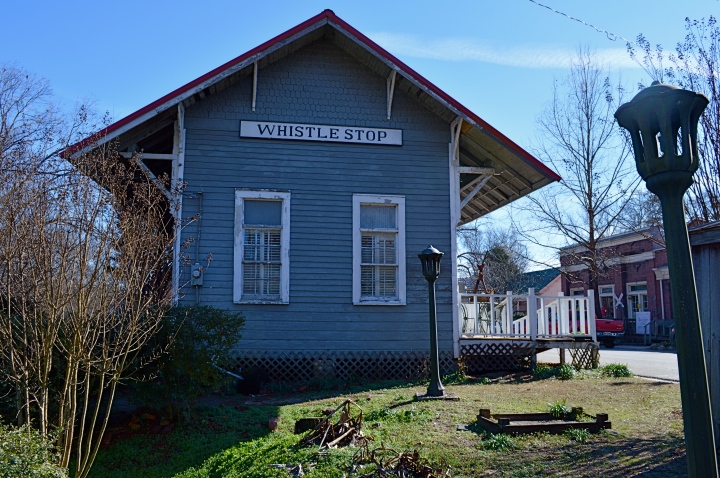 Juliette, Georgia is an out-of-the-way former train stop that might have disappeared into the Georgia wilderness if it hadn’t been the filming location for the Southern cult-classic movie Fried Green Tomatoes. In the movie, Juliette is renamed “Whistle Stop,” and while the train still whistles as it pounds through the town, it has been some time since it stopped there. Above, you can see the defunct train depot turned antique store, which bears homage to the town’s adoptive identity.
Juliette, Georgia is an out-of-the-way former train stop that might have disappeared into the Georgia wilderness if it hadn’t been the filming location for the Southern cult-classic movie Fried Green Tomatoes. In the movie, Juliette is renamed “Whistle Stop,” and while the train still whistles as it pounds through the town, it has been some time since it stopped there. Above, you can see the defunct train depot turned antique store, which bears homage to the town’s adoptive identity.
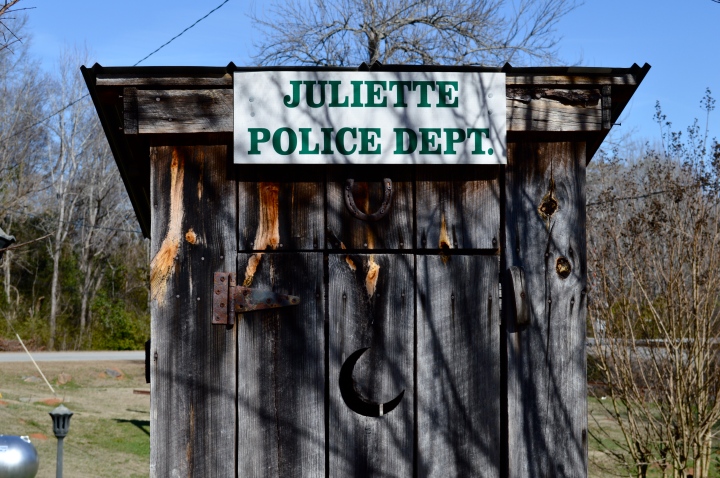 An old wooden outhouse labeled Juliette Police Dept. The town is a mere two-or-three block strip of small shops and eateries, a place that requires little if any policing.
An old wooden outhouse labeled Juliette Police Dept. The town is a mere two-or-three block strip of small shops and eateries, a place that requires little if any policing.
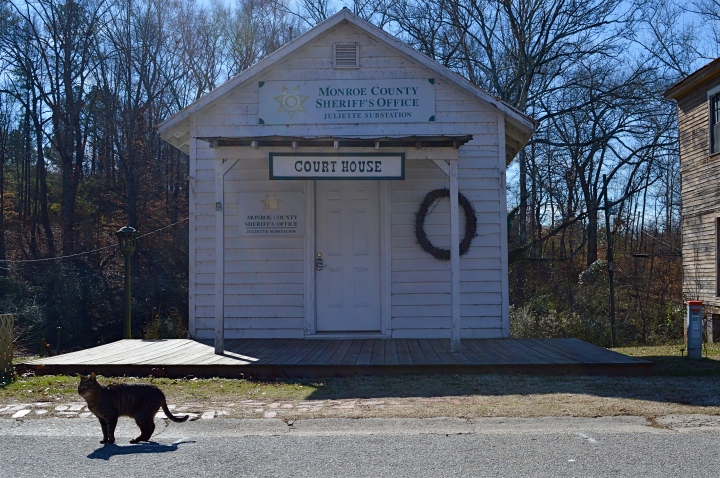 As with the police department, Juliette’s courthouse and sheriff’s office are more quirky than functional. There seem to be as many cats roaming the one-road, no-light town as people.
As with the police department, Juliette’s courthouse and sheriff’s office are more quirky than functional. There seem to be as many cats roaming the one-road, no-light town as people.
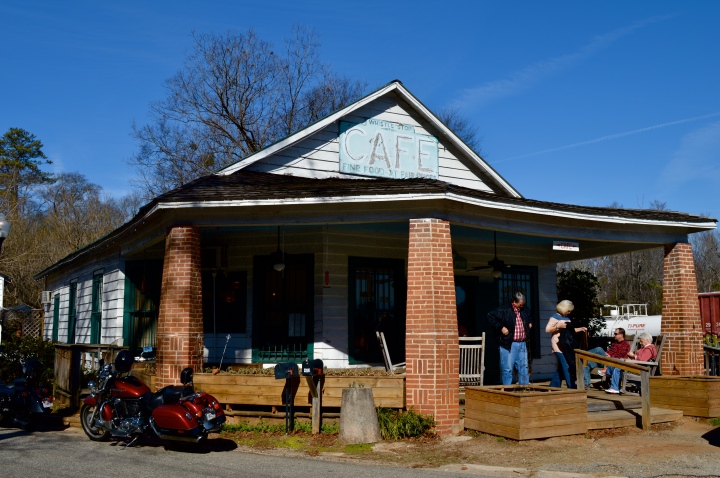 The characters in Fried Green Tomatoes frequent a little restaurant called the Whistle Stop Cafe, which was actually created for the movie and not the other way around. After the movie was released in 1991 and gained popularity, locals opened a real White Stop Cafe, based off the one in the movie. It has been open for business ever since.
The characters in Fried Green Tomatoes frequent a little restaurant called the Whistle Stop Cafe, which was actually created for the movie and not the other way around. After the movie was released in 1991 and gained popularity, locals opened a real White Stop Cafe, based off the one in the movie. It has been open for business ever since.
 The tracks of the Norfolk Southern railroad in Juliette, with an old abandoned mill or factory behind.
The tracks of the Norfolk Southern railroad in Juliette, with an old abandoned mill or factory behind.
 Heading east out of Juliette, we passed through the Piedmont National Wildlife Refuge. Pictured above is a road through the pines that are perhaps the most characteristic feature of the landscape. We passed few other travelers through this region.
Heading east out of Juliette, we passed through the Piedmont National Wildlife Refuge. Pictured above is a road through the pines that are perhaps the most characteristic feature of the landscape. We passed few other travelers through this region.
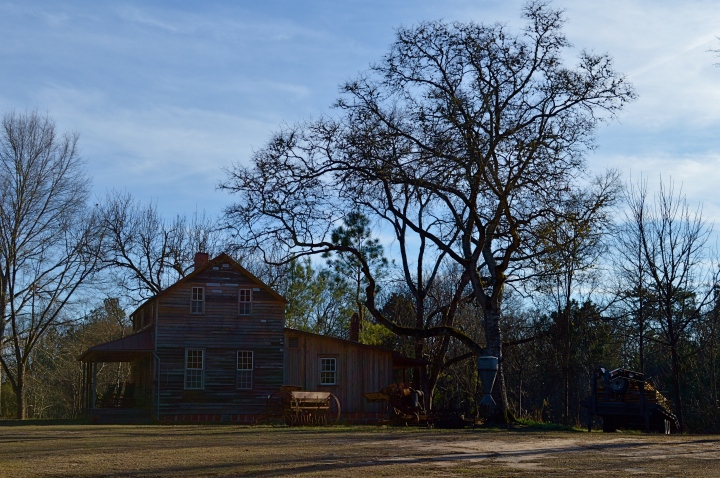 Our final stop that afternoon before heading back home to Decatur was Andalusia Farm in Milledgeville, the home of Southern Gothic novelist and icon Flannery O’Connor. Pictured above is the Hill House, a farmer’s cabin out behind the main house at Andalusia.
Our final stop that afternoon before heading back home to Decatur was Andalusia Farm in Milledgeville, the home of Southern Gothic novelist and icon Flannery O’Connor. Pictured above is the Hill House, a farmer’s cabin out behind the main house at Andalusia.
 Pictured here is a pair of mismatched windows and newspaper insulated walls at the Hill House. Using newspaper was once a common insulation method, back when the logs and boards of homes such as this were hand-hewn and drafty.
Pictured here is a pair of mismatched windows and newspaper insulated walls at the Hill House. Using newspaper was once a common insulation method, back when the logs and boards of homes such as this were hand-hewn and drafty.
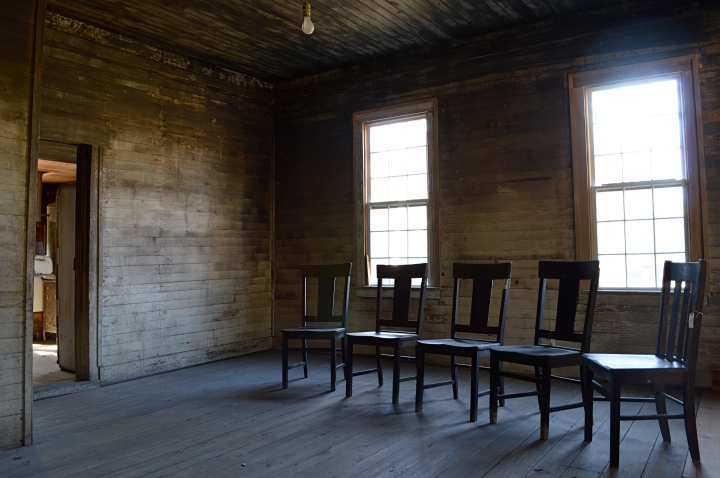 The front room at the Hill House.
The front room at the Hill House.
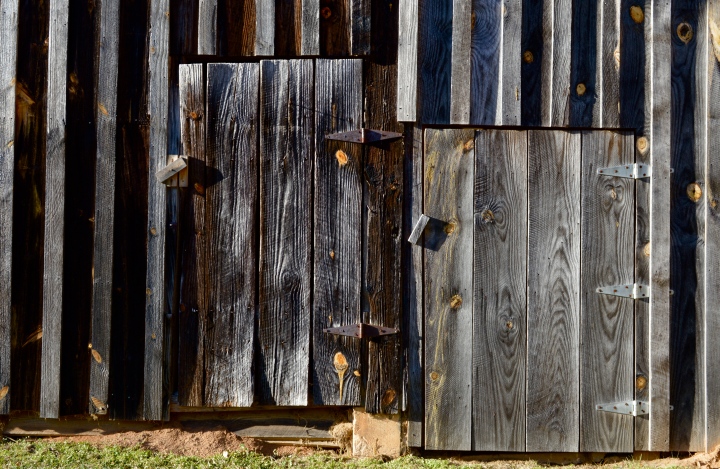 A pair of doors shown from the exterior at the dairy barn at Andalusia.
A pair of doors shown from the exterior at the dairy barn at Andalusia.
 The same doors as pictured above, this time from the interior of the dairy barn.
The same doors as pictured above, this time from the interior of the dairy barn.
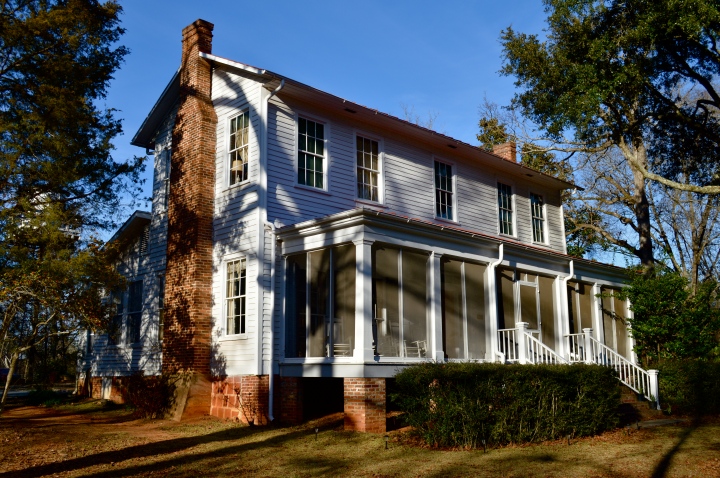 Flannery O’Connor’s residence, the main house, at Andalusia Farm. She wrote most of her work in the front bedroom of his home. It is open to this day for tours. You can find more information at their website.
Flannery O’Connor’s residence, the main house, at Andalusia Farm. She wrote most of her work in the front bedroom of his home. It is open to this day for tours. You can find more information at their website.
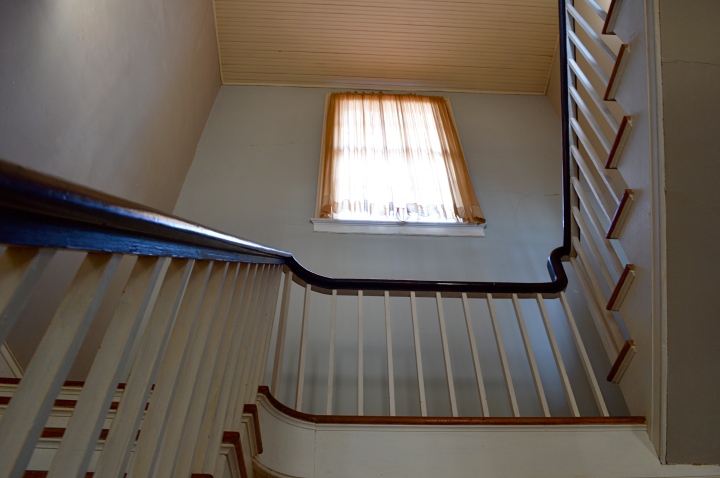 The stairs leading to the second floor inside the home. Although Flannery O’Connor was nearly crippled by lupus and could not use the stairs herself, the family still uses the second floor as private storage. She died in 1964, at the young age of 64, from complication due to lupus.
The stairs leading to the second floor inside the home. Although Flannery O’Connor was nearly crippled by lupus and could not use the stairs herself, the family still uses the second floor as private storage. She died in 1964, at the young age of 64, from complication due to lupus.
This makes me want to jump in my car and cruise Georgia. Thank you for such a fun and informational post!
Jessica, thank you for the kind words. You wouldn’t regret the trip, I promise.